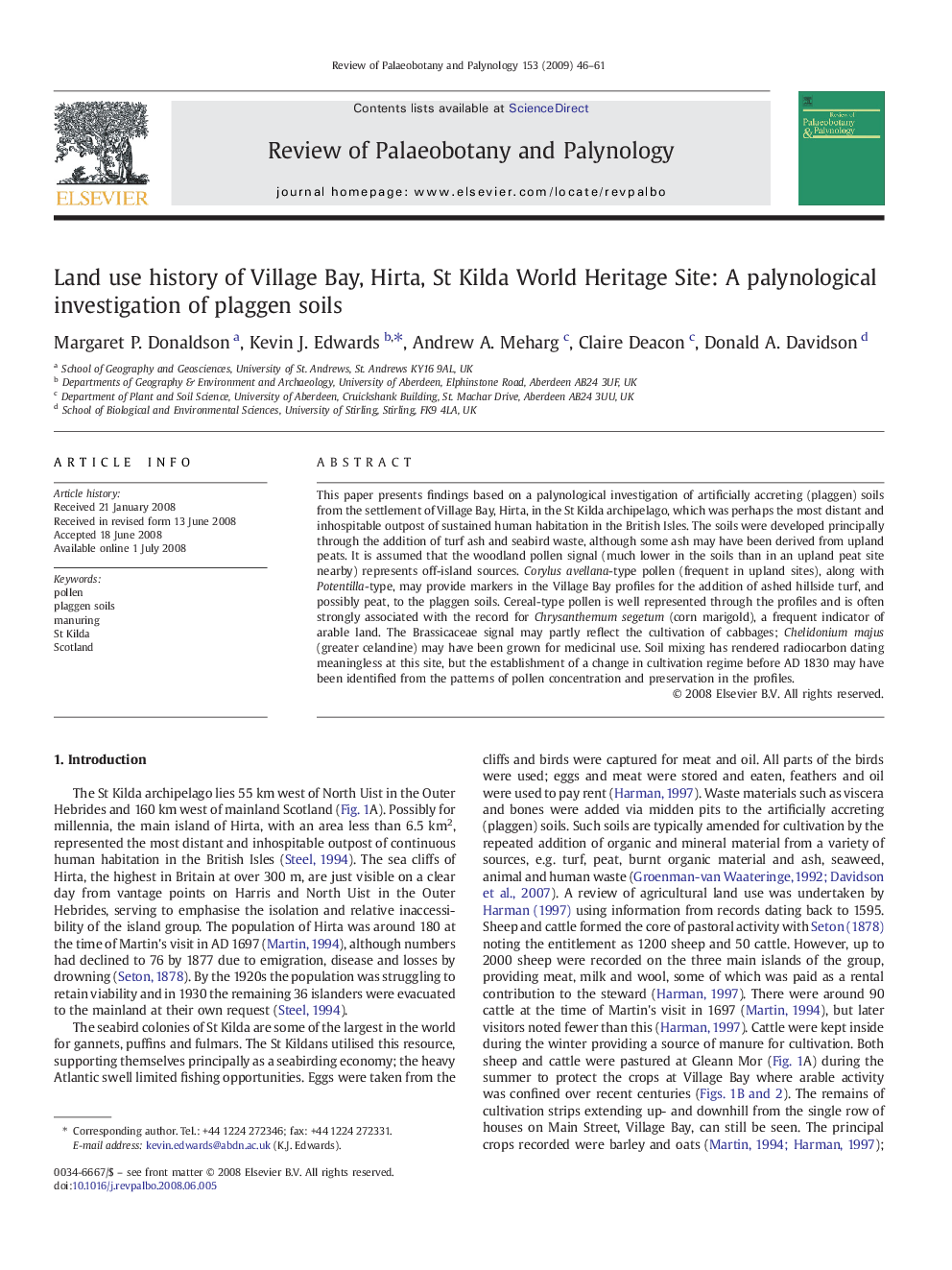| Article ID | Journal | Published Year | Pages | File Type |
|---|---|---|---|---|
| 4750880 | Review of Palaeobotany and Palynology | 2009 | 16 Pages |
This paper presents findings based on a palynological investigation of artificially accreting (plaggen) soils from the settlement of Village Bay, Hirta, in the St Kilda archipelago, which was perhaps the most distant and inhospitable outpost of sustained human habitation in the British Isles. The soils were developed principally through the addition of turf ash and seabird waste, although some ash may have been derived from upland peats. It is assumed that the woodland pollen signal (much lower in the soils than in an upland peat site nearby) represents off-island sources. Corylus avellana-type pollen (frequent in upland sites), along with Potentilla-type, may provide markers in the Village Bay profiles for the addition of ashed hillside turf, and possibly peat, to the plaggen soils. Cereal-type pollen is well represented through the profiles and is often strongly associated with the record for Chrysanthemum segetum (corn marigold), a frequent indicator of arable land. The Brassicaceae signal may partly reflect the cultivation of cabbages; Chelidonium majus (greater celandine) may have been grown for medicinal use. Soil mixing has rendered radiocarbon dating meaningless at this site, but the establishment of a change in cultivation regime before AD 1830 may have been identified from the patterns of pollen concentration and preservation in the profiles.
